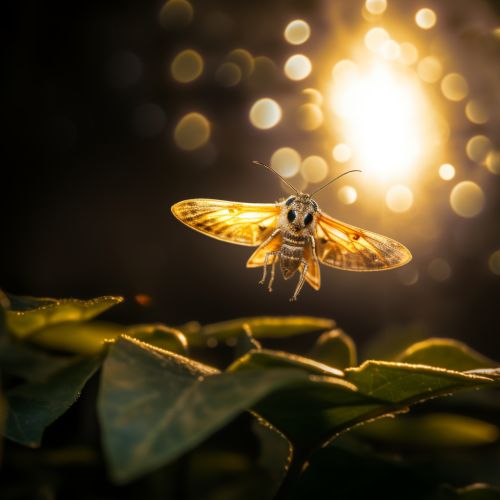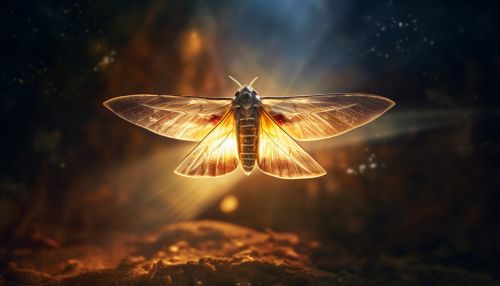Insect behavior
Introduction
Insect behavior refers to the actions or reactions of insects in response to stimuli, either from their environment or from other insects. The study of insect behavior is a rapidly growing field within entomology, with many scientists dedicated to understanding everything from basic insect survival skills, such as feeding and reproduction, to more complex behaviors, like social structure and communication.
Classification of Insect Behavior
Insect behavior can be broadly classified into three categories: innate behavior, learned behavior, and social behavior.
Innate Behavior
Innate behaviors are those that are genetically hardwired into an insect and are performed correctly the first time they are triggered. These behaviors do not require any prior experience or learning. Examples of innate behavior in insects include phototaxis (movement towards or away from light), geotaxis (movement towards or away from gravity), and chemotaxis (movement towards or away from chemical stimuli).


Learned Behavior
Learned behaviors in insects are those that change in response to experiences during the insect's life. These behaviors are not present at birth, but are acquired or modified after birth. Examples of learned behavior in insects include habituation, sensitization, associative learning, and spatial learning.
Social Behavior
Social behaviors are those that involve interaction between individuals. These behaviors are particularly common in social insects, such as ants, bees, and termites, which live in large colonies. Examples of social behavior in insects include cooperation, division of labor, and communication.
Innate Behavior in Detail
Innate behaviors are instinctual and can be performed without any prior experience or learning. They are essential for an insect's survival and reproduction.
Phototaxis
Phototaxis is an innate behavior in insects that involves movement towards or away from light. Positive phototaxis is movement towards light, while negative phototaxis is movement away from light. Many insects, such as moths and flies, exhibit positive phototaxis and are attracted to light sources.
Geotaxis
Geotaxis is an innate behavior in insects that involves movement towards or away from gravity. Positive geotaxis is movement towards gravity, while negative geotaxis is movement away from gravity. Many insects, such as ants and beetles, exhibit negative geotaxis and will move upwards when placed in a vertical container.
Chemotaxis
Chemotaxis is an innate behavior in insects that involves movement towards or away from chemical stimuli. Positive chemotaxis is movement towards chemicals, while negative chemotaxis is movement away from chemicals. Many insects, such as bees and butterflies, exhibit positive chemotaxis and are attracted to the scent of flowers.
Learned Behavior in Detail
Learned behaviors in insects are those that change in response to experiences during the insect's life. These behaviors are not present at birth, but are acquired or modified after birth.
Habituation
Habituation is a form of learning in which an insect decreases or ceases its responses to a stimulus after repeated or prolonged exposure. This is the simplest form of learning, and it involves a change in behavior that results from repeated exposure to a single stimulus.
Sensitization
Sensitization is a non-associative learning process in which repeated administration of a stimulus results in the progressive amplification of a response. Sensitization can be thought of as the opposite of habituation.
Associative Learning
Associative learning is a form of learning in which a relationship is formed between two stimuli or between a stimulus and a behavior. Classical conditioning and operant conditioning are two types of associative learning.
Spatial Learning
Spatial learning is a form of learning in which an insect learns to navigate its environment. This type of learning is particularly important for insects that need to return to a specific location, such as a nest or food source.
Social Behavior in Detail
Social behaviors are those that involve interaction between individuals. These behaviors are particularly common in social insects, which live in large colonies.
Cooperation
Cooperation is a form of social behavior in which individuals work together to achieve a common goal. In social insects, cooperation is essential for the survival of the colony.
Division of Labor
Division of labor is a form of social behavior in which different individuals in a colony perform different tasks. In social insects, division of labor is often based on age or physical characteristics.
Communication
Communication is a form of social behavior in which individuals exchange information. In social insects, communication can take many forms, including chemical signals, physical contact, and visual signals.
